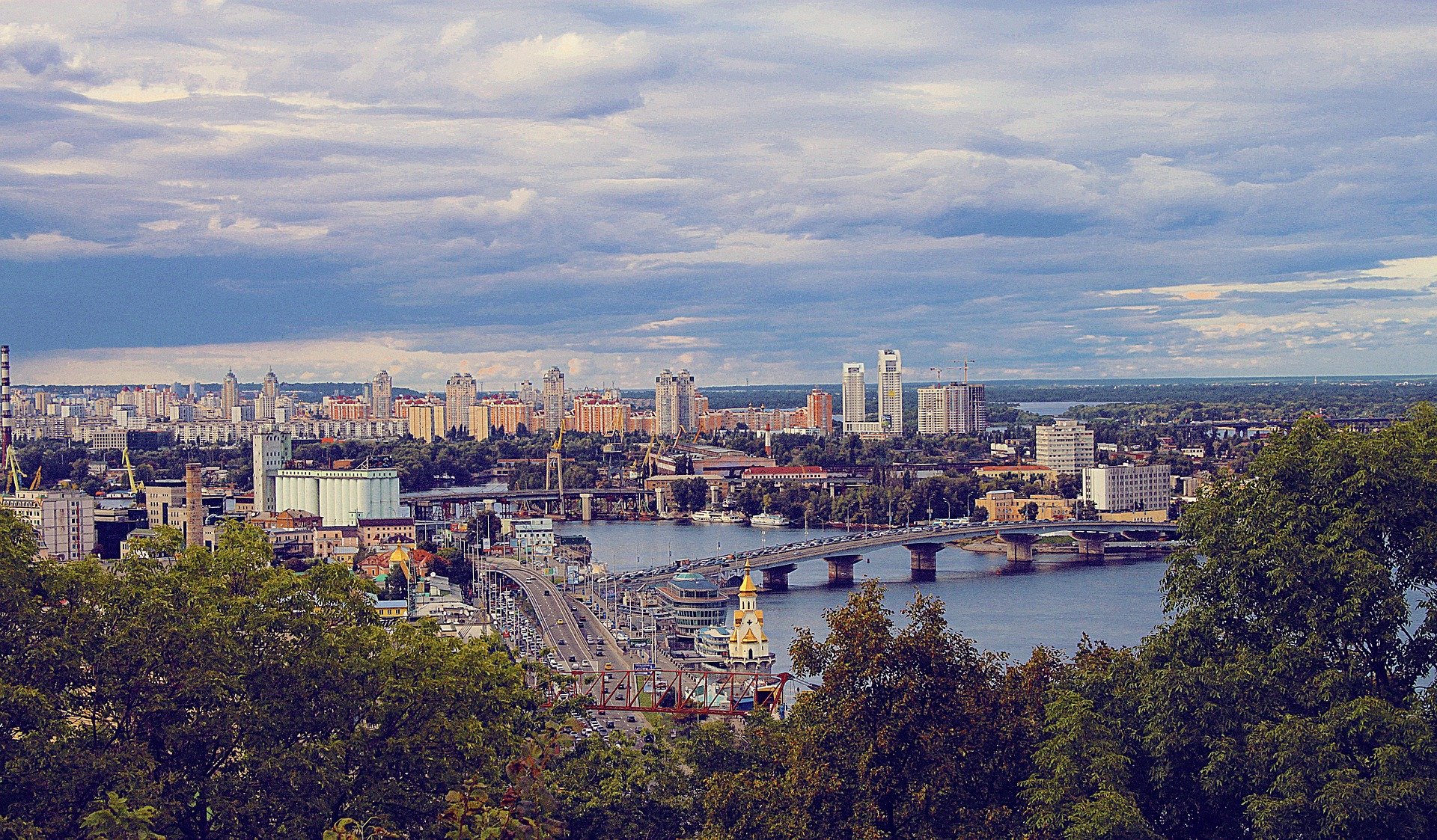space
Нове Східне Партнерство: час для великих амбіцій
Eastern Partnership Review: Time for the EU to Aim High
space
Author: Kateryna Zarembo (Kyiv)
For author info see below
Коли у 2009 році була запущена ініціатива Східного партнерства (СхП), в Україні її зустріли із часткою скепсису. Вона не обіцяла перспективи членства та об’єднувала групу країн, які мали виразно різні інтеграційні прагнення щодо ЄС. Відтак, в Україні сприймали Східне партнерство щонайбільше як додаток до двостороннього треку. Це не означає, що в очах українських посадовців та громадянського суспільства Східне партнерство було повністю позбавлене цінності – зрештою, воно відокремлювало східних сусідів ЄС в окрему групу в рамках Європейської політики сусідства (ЄПС) та створювало деякі нові платформи для моніторингу та співпраці для громадянського суспільства.
Понад десять років потому можна цілком певно сказати, що Україна значною мірою виграла від СхП. Враховуючи зменшені апетити ЄС щодо подальшого розширення та вочевидь малі амбіції щодо подальшого розвитку відносин із Східними сусідами, кожна ниточка, яка зв’язує Україну та ЄС, має значення.
Напевно, двома проектами, які були найбільш відчутними для суспільства, були імплементація Глибокої та всеосяжної зони вільної торгівлі (ГВЗВТ) та безвізовий режим із ЄС. І українські експортери, і імпортери виграли від ГВЗВТ, позаяк з початку її дії торгівля між ЄС та Україною зросла на 49%. Понад те, безвізовий режим спричинив маленьку революцію у мобільності між ЄС та Україною: за найскромнішими підрахунками, з червня 2017 року до червня 2019 року 3 мільйони українців відвідали ЄС без віз, а в Україну зайшло біля десятка іноземних авіакомпаній та з’явилося близько півсотні нових лоу-кост рейсів.
Дещо менш масштабні, однак дуже важливі для цієї галузі, зміни стосуються можливостей, які Східне партнерство створило для українських науковців та студентів. Україна є одним з найбільших бенефіціарів програми Еразмус+ серед країн-учасниць Східного партнерства: у програмах академічної мобільності взяло участь понад 9 тисяч українських та 4 тисячі європейських студентів та науковців.
На загальнонаціональному рівні, за даними опитування, здійсненого на замовлення Центру «Нова Європа», результати Східного партнерства в Україні наступні. Станом на осінь 2018 року 18% респондентів підтвердили, що вони відчули позитивний ефект від європейської інтеграції України, 64% сказали, що не відчувають такого ефекту, а 17,5% не змогли визначитися із відповіддю. З тих, хто відзначив, що відчуває позитивний ефект, найчастіше зазначали його у зв’язку з покращенням ситуації для місцевих громад (див. Таблиця 1).
Таблиця 1. Якщо ви відчуваєте позитивний ефект від зближення з ЄС, то в чому він полягає (респонденти могли обрати декілька опцій)?
| Місцева влада демонструє прозорість та підзвітність
|
20,68% |
| Місцева влади дослухається до громади
|
27,61% |
| Менше бюрократії на місцевому рівні
|
18,03% |
| Покращення у транспортній інфраструктурі(наприклад, відремонтовані дороги або зручний та безпечний громадський транспорт)
|
28,61% |
| Покращені послуги у закладах соціальної інфраструктури (лікарнях, садочках, школах)
|
19,22% |
| Спільноти проявляють ініціативу у вирішенні місцевих проблем та не чекають, доки їх вирішить держава
|
31,17% |
| У моєму місті/селі з’являються нові робочі місця та закордонні інвестиції
|
18,46% |
| Місцеві підприємства почали експортувати до ЄС
|
27,06% |
| Покращення екологічної ситуації (щодо якості питної води, парків, переробки сміття)
|
19,97% |
| Не знаю
|
9,27% |
| Інше: безвізовий режим / можливість працювати за кордоном
|
6,29% |
За останні п’ять років ставлення до ЄС змінилося на краще: тоді як у травні 2013 року інтеграцію країни до ЄС підтримувало 42% населення, у листопаді 2019 року підтримка становила вже 52%. Окрім того, після початку російської агресії у 2014 році підтримка будь-якого євразійського інтеграційного проекту кардинально впала, тоді як європейська інтеграція стала вибором більшості та навіть була закріплена в українській Конституції у лютому 2019 року (разом із євроатлантичною інтеграцією).
Насамкінець, те, що Україна, разом з Молдовою та Грузією, подала спільні пропозиції щодо перегляду Східного партнерства, засвідчує, наскільки серйозно вона ставиться до СхП. Ці три країни запропонували запровадження так званої «Стратегії Тріо», іншими словами застосування принципу диференціації. Утім, бачення оновленого Східного Партнерства з боку Європейської Комісії нічого подібного не пропонує. Тоді як всі пропозиції – інтегровані економіки, підзвітні демократичні інститути, стійкість довкілля, цифрові трансформації, тощо – поза сумнівом, актуальні та значущі, залишається незрозумілим, чи зможе оновлене Східне партнерство запропонувати країнам-учасницям щось нове та амбітне. Якщо ні, то це, разом із викликами, пов’язаними із епідемією та фінансовою кризою (наприклад, обмеження вільного перетину кордонів у Шенгенській зоні, скорочення обсягів двостороннього торгівлі, тощо), імовірно, створить додаткові перешкоди на євроінтеграційному шляху України.
У Східному партнерстві закладена ідея спільної відповідальності (co-ownership) з боку ЄС та країн-учасниць. Відтак, дуже важливо, щоб у наступне десятиліття ініціатива поєднувала у собі бачення як ЄС, так і його партнерів. Не менш важливо, щоб ЄС продемонстрував амбітність щодо СхП, яка може виявлятися чи то у диференціації між державами-учасницями, чи то у додаванні безпекової компоненти, у збільшенні фінансування чи навіть прогресу щодо надання перспективи членства. Трансформаційна сила ЄС втілюється через те, що громадяни держав-партнерів вірять, що одного дня вони можуть стати його частиною. Своєю чергою, брак амбітності з боку ЄС живитиме євроскептицизм поза межами його кордонів та призведе до зворотного ефекту – більше проблем, аніж рішень для самого ЄС.
Цей бріф частково базується на публікації Zarembo K., Litra L. (2019) Ukraine: New Engines for the Partnership. In: Stanislav Secrieru and Sinikukka Saari (eds). The Eastern Partnership a Decade on: Looking Back, Thinking Ahead. EU Institute for Security Studies. Chaillot Papers 153. P. 28 – 42.
When the Eastern Partnership (EaP) was launched in 2009, it was perceived with a degree of scepticism in Ukraine. Devoid of membership perspective and bringing together a group of countries with clearly different integration ambitions, it was understood at most as an addition to the bilateral track. That is not to say that in the eyes of Ukraine’s officials and civil society the EaP was completely without value – after all, it differentiated between the EU’s Southern and Eastern neighbours within the European Neighbourhood Policy (ENP) and created some new monitoring and cooperation platforms for civil society.
After over ten years, it is safe to say that Ukraine benefited a lot from being part of the EaP. On grounds of the EU’s diminished appetite for further enlargement and apparently low ambitions for further developed relations with its Eastern neighbours, every existent string matters in tying Ukraine to the EU and vice versa.
Probably the two biggest projects, tangible for the society at large, have been the implementation of the Deep and Comprehensive Free Trade Area (DCFTA) and the visa free regime with the EU. Ukrainian exporters and importers benefited likewise from the DCFTA, as trade between the EU and Ukraine has been growing by 49% from the start of the DCFTA. Moreover, the visa free regime has become a small revolution for mobility between the EU and Ukraine: according to the most modest calculations, 3 million Ukrainians have been visiting the EU visa free from June 2017 until June 2019, bringing to Ukraine a dozen new foreign airlines and around 50 new low-cost flight destinations.
Perhaps of a lesser scale, but still vitally important for the field in question, are the opportunities created by the EaP for Ukrainian scholars and students. With more than 9 thousand Ukrainian and 4 thousand European participatingstudents and scholars, Ukraine has been one of the biggest beneficiaries of the Erasmus+ program among the Eastern partners.
On a national level, according to a poll commissioned by the New Europe Center, the picture of EaP in Ukraine is as follows. In autumn 2018, 18% of the respondents confirmed that they have felt the positive effect of Ukraine’s integration with the EU, 64% said that they had not experienced any positive effects and 17.5% were not able to give an answer. Out of those who did feel a positive effect, the most cited options were connected to the efficiency of local communities (see Table 1).
Table 1. WHAT POSITIVE EFFECT FROM UKRAINE’S INTEGRATION WITH THE EU DID YOU FEEL (out of those who stated they did feel such an effect; the respondents could select more than one option)?
| Local authorities demonstrate transparency and accountability
|
20,68% |
| Local authorities listen to the communities
|
27,61% |
| There is less bureaucracy at the local level
|
18,03% |
| Transport infrastructure is improving (e.g. reconstructed roads, or comfortable and safe public transport)
|
28,61% |
| Improved service at social infrastructure facilities (hospitals, kindergartens schools)
|
19,22% |
| Communities are proactive in resolving local issues and do not wait until the state resolves them
|
31,17% |
| There are new jobs and foreign investors in my city/town/village#
|
18,46% |
| Local enterprises start exporting their products to the EU
|
27,06% |
| Improvements in the environmental situation (clean water reservoirs and parks, recycled waste)
|
19,97% |
| Don’t know
|
9,27% |
| Other: Visa-free entrance / Ability to work abroad
|
6,29% |
Over the last years, the EU’s image has improved, with 37% of the population supporting the country’s integration with the EU in February 2013, and as many as 52% in November 2019. Besides, after the start of the Russian aggression in 2014 the support for integration with any kind of a Eurasian project dropped radically, while European integration became the choice of the majority and was even enshrined in the Ukrainian constitution (alongside the integration into NATO) in February 2019.
Finally, the fact that Ukraine, together with Moldova and Georgia, has submitted a joint proposal for the EaP review, illustrates how seriously the EaP is taken in Ukraine. They suggest the adoption of a so-called “Trio Strategy” towards these three countries, i.e. to implement the principle of differentiation. However, the European Commission’s vision of the renewed EaP offers nothing of the kind. While all the proposals – integrated economies, accountable democratic institutions, environmental resilience, digital transformation, etc. – are undoubtedly relevant, it is not exactly clear whether the reviewed Eastern Partnership is going to offer anything new and ambitious to its participants. This, together with the challenges posed by the coronavirus pandemic and economic crisis (i.e. suspended Schengen zone and restricted travel, a likely drop in the bilateral trade, etc.), is likely to create more, not fewer, obstacles on Ukraine’s European path.
All in all, since the Eastern Partnership implies a co-ownership by the EU and its partners in the East, it is crucially important that its incarnation in the next decade is a combination of both the EU’s and its partners’ vision. It is equally important that the EU demonstrates its ambitions for the EaP, be that in differentiation between the participating states, adding a security dimension, boosting funding schemes, or even progress on a membership perspective. Although a truism, the EU’s transformative power lies in the people’s belief that they can come closer to the EU one day. In its turn, a lack of ambition from the EU may nourish Euroscepticism outside its Eastern borders and lead to a counterproductive effect, creating more problems than solutions for the EU itself.
This brief is partially based on the publication by Zarembo K., Litra L. (2019) Ukraine: New Engines for the Partnership. In: Stanislav Secrieru and Sinikukka Saari (eds). The Eastern Partnership a Decade on: Looking Back, Thinking Ahead. EU Institute for Security Studies. Chaillot Papers 153. P. 28 – 42.

